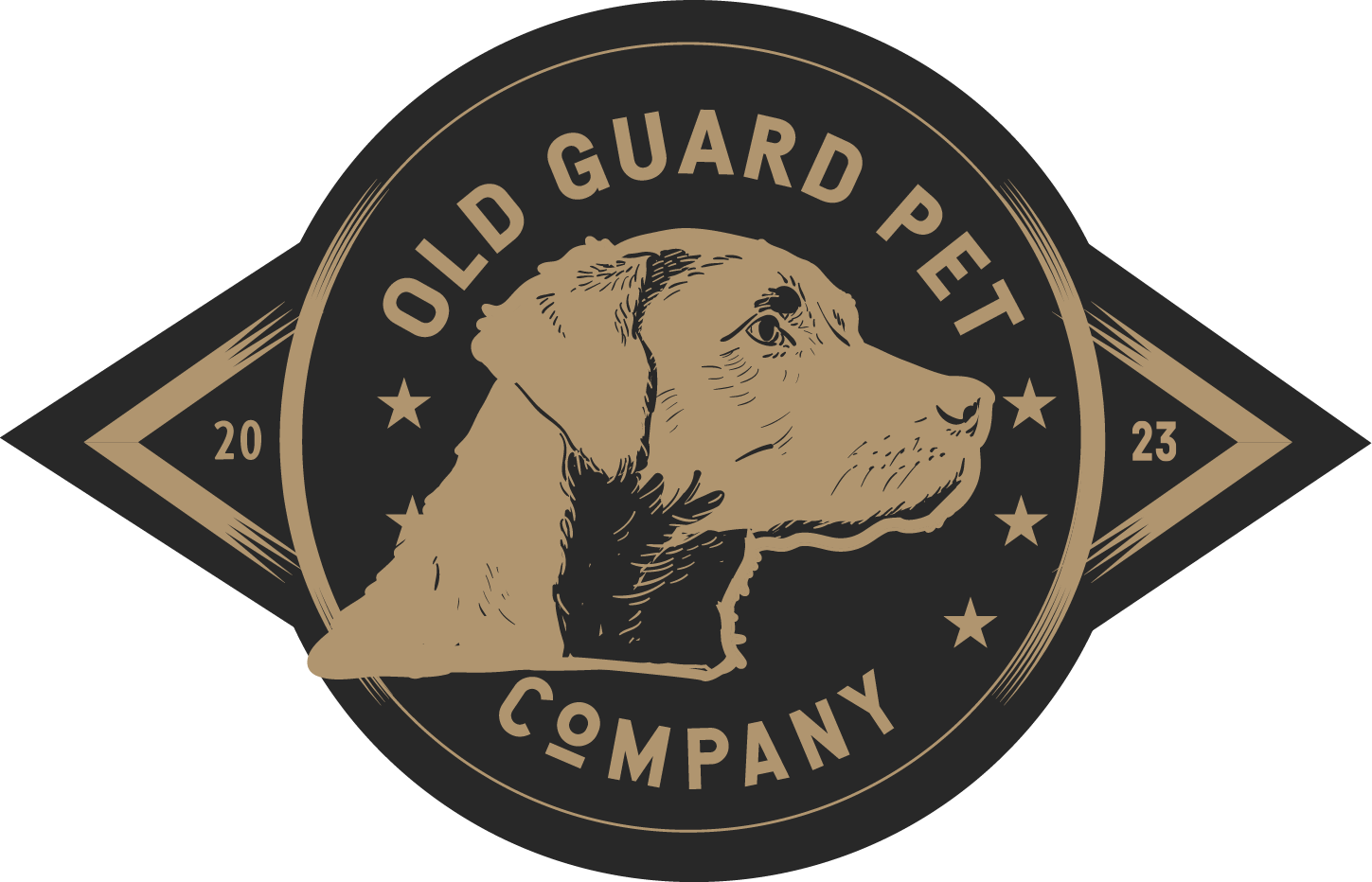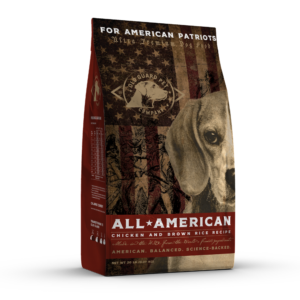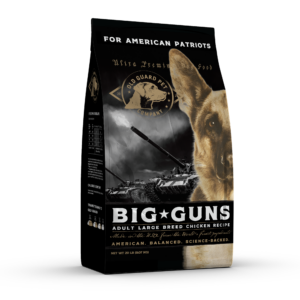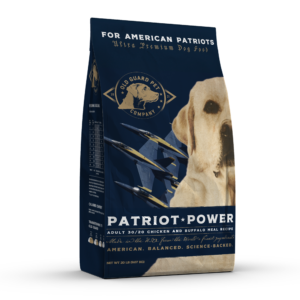Copper in dog food is becoming a hot topic. So, what do we know today, and should you, as a dog owner, be concerned?
Copper is an essential trace mineral for dogs, critical to various bodily functions such as the formation of red blood cells (necessary for the absorption and transport of dietary iron and formation of hemoglobin), bone growth, and maintaining healthy connective tissues, co-factor of enzymes and skin, and coat. Its historical inclusion in dog food stems from its essential role in preventing copper deficiency-related issues like anemia, coat color and quality issues, and bone abnormalities.
Despite the historical use of supplemental copper in pet food as well as known health impacts with deficiencies in 2021, an article was published entitled “Is It Time to Reconsider Current Guidelines for Copper Content in Commercial Dog Foods?” where researchers suggested copper content found in the liver of dogs has been increasing over the last 20 years or so. In the early 20th century, the average copper concentration in a dog’s liver was about 10 micrograms per gram. By the late 20th century, this figure had risen to over 400 micrograms per gram, indicating a significant increase in dietary copper intake. Researchers also argue that the prevalence of copper-associated liver disease is increasing over time, but the exact prevalence of copper-associated liver issues remains unknown.
Since this article was published, copper levels in dog foods have become a “hot topic” of debate and concern. This prompted a response from AAFCO (American Association of Feed Control Officials, which sets guidelines for dog nutritional requirements) to call a meeting with a panel of experts to discuss copper in dog recipes and determine if a safe upper limit or maximum inclusion level should be mandated.
So, what is too little or too much copper? Should I be worried about the copper in my dogs’ diet?
In this blog, we will review the historical and latest research on copper for dogs’ health, the risk level for your dog’s health, and how to assess your dog’s food for copper.
 The History of Copper in Dog Food and Where We Are Today
The History of Copper in Dog Food and Where We Are Today
It has long been established that copper is essential to a dog’s health and well-being. Research on the effects of copper on dogs began in the 1920s when scientists began to look at the level of copper in the liver of dogs. Researchers then studied the impact of a very low copper diet on the development of puppies and saw significant, detrimental health impacts. Much of this historical research established minimum copper levels in the diet of puppies and adult dogs, and this level, first established by AAFCO in the 1970s, currently stands at 7.3 mg/kg and 12.4 mg/kg for puppies. Remember, for pet food to be approved for sale in most states, they must generally comply with AAFCO guidelines (unless they have approved exceptions backed by data) designed to ensure that dogs get a complete and balanced diet. In 2006, leading dog and cat nutrition researchers wrote a book outlining all the current knowledge on the nutritional requirements of dogs and cats (NRC, 2006). In response to the publication of all current knowledge, in 2007, AAFCO removed the “safe upper level” of 250-300 mg/kg copper in dog foods because there was no real data supporting a defined safe maximum inclusion of copper for dogs (this original recommendation was based on limited swine data).
In 2016, the European regulatory group (FEDIAF- the equivalent of AAFCO for the EU) set their upper limit to 25 mg/kg (EFSA, 2016). However, they acknowledged not much is known about the safe upper levels for dogs, and the maximum was based on environmental factors like reducing the copper concentration in soil and from companion and agricultural animals, as well as antibiotic resistance concerns. The way they set the level of 25 mg/kg was basically looking at the requirement set today for adult dogs, estimating the base level of copper in recipes, considering the percent available of supplemental copper to dogs (about 30%) and then multiplying the base requirement by 1.2 (an estimated value designed to consider the intake of most of the population). Authors of the 2021 article suggest that maximum values be set at 3.6 mg/kg to 4.4 mg/kg, below minimum levels and that even the minimum levels are not well established.
AAFCO considered following a similar limit in copper as Europe but concluded that the limit set was too arbitrary. “AAFCO was and remains reluctant to make regulatory recommendations based on implications or associations without definitive proof of cause and effect,” said Austin Therrell, executive director of AAFCO. “For that reason, the AAFCO Pet Food Committee felt it prudent to convene an expert panel and ask noted animal nutrition and health experts to assess whether it is necessary to revise the copper guidelines in the current AAFCO Dog Food Nutrient Profiles. To set a maximum recommended content for copper in dog foods at this time would be an arbitrary decision, not based on science, with no assurance that the value selected would protect against liver disease,” he added. The AAFCO group is also currently considering the approval of a claim such as “controlled copper” which would limit the copper level of a commercially available diet to 15 mg/kg to support the claim. This claim consideration was open for public comment until March 1, 2024. While the “working group” approved this claim by a slim majority. Those who voted against the claim did so because they concluded that the claim was not adequately supported by scientific evidence and the level is arbitrary, with some saying that “controlled copper” demonizes the inclusion of copper in diets, though an essential nutrient and the level is not proven to prevent any copper related liver accumulation or disease. Lastly, it is unknown if reducing the copper level will impact other nutrients in the diet or availability to the dog. Those supporting the claim felt that it would make it easier for pet owners and veterinarians seeking a lower copper diet to find it. The level is less than most commercial foods but above the minimum requirement. They stated it created a “level playing field” field for manufacturers and states approving the claims. However, they agreed that the claim could not imply a health benefit or disease prevention. As of June 2024, the Pet Food Committee at AAFCO formally voted not to establish a “controlled copper” claim. You can read the full statement here: PFC Votes on Voluntary “Controlled Copper” Claim for Dog Food (aafco.org). The committee cited a lack of sufficient data to establish such a claim.
This then begs the question, how big of a risk is Copper in Dog Food?
First, the risk is low and as a pet owner you shouldn’t panic. For the general population of dogs, reported risk levels for the accumulation of copper in the liver resulting in copper associated storage disease, hepatitis and/or cirrhosis has been suspected to be around 0.01%. However, sometimes copper associated liver issues may not be properly identified so, it is likely that the prevalence is higher. In one article 30% of liver biopsies showed signs of copper associated issues. What all researchers will agree on is that the actual prevalence of issues remains unknown. What is known is that copper levels in dogs’ livers have been increasing, but it is unclear if this has now stabilized or if it continues to increase.
There are clear breed related factors that have been observed in risk for copper storage disease. Most healthy dogs can readily remove excess copper from the liver. However, there are some breeds with genetic predispositions to having a reduced ability to clear excess copper and those breeds are: Bedlington Terriers (when in 1975, the disease was first identified and the genetic basis has been well‐described in this breed), West Highland White Terriers, Dalmatians, Doberman Pinschers, and potentially Labrador Retrievers. So, if you have a dog that is this breed you can ask your vet about risk levels.
Naturally, the highest amount of copper is found in the liver. Normal copper limits in the liver range between 150 ppm and 400 ppm with levels greater than 1800ppm being considered pathogenic. However, dogs may or may not show signs of copper-associated liver issues at high levels, and some may show issues at lower levels of copper in the liver. While copper is necessary, excessive amounts are usually excreted in bile acids but in rare situations do lead to copper toxicity or copper-associated hepatopathy (CAH), a condition that can cause severe liver damage. Symptoms of CAH may not be immediately apparent. Over time, excess copper accumulates in the liver, potentially causing inflammation and scarring, which can result in liver failure and even death. The condition is not limited to predisposed breeds and can affect any dog, especially if the copper levels in their diet remain unchecked. Lastly, and what makes this more challenging, is that some dogs with higher levels of copper show no clinical signs of liver damage. Also, the clinical signs can take years to develop and can be difficult to diagnose.
Interestingly, if high copper levels in the liver are identified early on, they can be readily treatable. Certain medications can be used or even zinc supplementation can help reduce the higher copper levels. Another treatment to support liver health can include Vitamin E which acts as an antioxidant.
 The Complex Diet Impact on Copper in Dog Food
The Complex Diet Impact on Copper in Dog Food
Average copper levels of commercial recipes range widely and from a collection of analyses of diets this is typically 7.6 to 47 mg/kg. Homemade recipes (raw or cooked) have a wider range of 0.5-124 mg/kg. There are prescription diets made for dogs with hepatic (liver) issues; however, while these tend to be lower in copper ~8 mg/kg they are also often highly restricted in protein and were designed for short term intervention.
Copper absorption is impacted by different recipes of dog food (so the ingredients in the recipe affect absorption of copper both positively and negatively). For example, in one study, recipes that included corn gluten meal increased absorption of copper where soy protein decreased absorption. Also, other minerals compete for absorption with copper, like zinc and iron. Changing the concentrations of these in a diet will impact the amount of copper available to your dog. Including fiber in the diet may reduce copper availability as well.
Certain forms of copper are also more accessible vs. others, and it is thought that some may be more readily removed from the liver vs. others. Copper in the form of copper oxide is absorbed less than copper sulfate or copper propionate. This insight led to a recommendation by AAFCO in the late 90’s that pet food companies include copper sulfate vs. the less available form of copper oxide in the recipes to ensure the copper is available for the dogs to use. Copper oxide had an absorption predicted to be around 1% where copper sulfate is closer to 30%. Again, this is without diet considerations. Just on the specific copper form.
Also, certain ingredients like organ meats and sweet potatoes naturally provide higher levels of copper. In the 2021, article “Is It Time to Reconsider Current Guidelines for Copper Content in Commercial Dog Foods?” researchers note that the growth in popularity of diets with higher levels of organ meats and grain free recipes (which typically include sweet potato, legumes) could also be contributing to the increase in liver concentration of copper but, it is unknown. In another study, published in 2021, it was observed that liver copper levels decreased from 2006 to 2012 and then increased to peak in 2016 and have been decreasing thereafter. They hypothesized that the popularity of grain free recipes during this time could have contributed to this change but, again this is unknown and speculative since often diet histories are not well known.
Another factor highlighted in some articles is that since the 1970s, most homes built in the United States contain copper piping which has the potential to corrode and leach over time. Copper is also used in a variety of agricultural applications which could potentially result in soil or water contamination leaching into the meat and vegetable food supply.
Overall, it’s essential to not only look at copper levels but other factors like all other ingredients and micronutrients in the diet as well as form. It’s not as simple as looking at the level of copper in the diet alone. Nor is it valuable to solely consider the form of copper added.
The Complexity of the Question
It’s clear there are a lot of questions around what level of copper is ideal for dog health. So, you might ask yourself- why don’t you just study it and give us an answer? Well, the reason is because of the complexities of the research needed to define the ideal level of copper in a dog’s diet. As we have reviewed, there are many factors that can impact copper levels in the diet, the absorption of copper and the removal of excess copper from the body. Further, the “gold standard method” to test for copper levels is a liver biopsy and this is a highly invasive test with significant ethical considerations. Simply put, it’s difficult to design a controlled study, difficult to measure, difficult to apply findings across the entire industry and it would need to be a long-term study or better yet, multiple studies, to truly evaluate the right copper levels.
What should I do to best support my dog’s health?
In conclusion, while copper is an essential nutrient in dog diets, its history in dog food reveals a complex balance between providing enough to prevent deficiency and avoiding excess that could lead to toxicity. The evolution of dog food manufacturing and the subsequent rise in copper levels in dogs highlight the need for continued research but this is not a simple task and mass application across the industry would be difficult considering the complex interactions of diet, environment, dog breed and risk. It’s a reminder that, as with all nutrients, moderation and balance are key to ensuring health and longevity. Further, the actual health risk and underlying cause of the increase in copper in dogs’ livers remain unknown. No single change in the pet food industry can be associated with the increase in copper.
However, it should be noted that recent trends in the pet food industry to increase protein in the form of organ meats as well as using more pulse ingredients like legumes have been questioned as contributing to the increase copper levels due to the naturally higher level of copper in these ingredients. Also, the growth in popularity of raw foods, fresh meat, novel proteins, supplements and toppers, some with more available forms of copper and high levels of copper, need to be carefully considered during formulations. Always ask your vet about your pets health and food. Also, don’t underestimate the power of adding certain ingredients, supplements, toppers or mixed feeding with your dog’s kibble. Make sure you are consulting a vet or expert before making any changes. You can read more about supplements on our blog: The Positive and Negatives of Supplementing With Dog Food Toppers (oldguardpetco.com)
 At Old Guard, our recipes are around 20-23 mg/kg (there are natural differences between recipes). We don’t traditionally use a cumulation of ingredients that are naturally high in copper and check each recipe for copper levels after cooking. We add additional antioxidants to help support liver health and the ideal level of zinc. We use several forms of copper to balance absorption. Finally, we will keep on top of current research to ensure we are at the forefront of scientific understanding and with the availability of sufficient and quality evidence continue to advance canine nutrition to support dogs’ health. However, we also won’t follow trends or be reactive without a clear rationale. We will continue to monitor our recipes, raw materials and continue to be aware of new research in this area as it becomes available.
At Old Guard, our recipes are around 20-23 mg/kg (there are natural differences between recipes). We don’t traditionally use a cumulation of ingredients that are naturally high in copper and check each recipe for copper levels after cooking. We add additional antioxidants to help support liver health and the ideal level of zinc. We use several forms of copper to balance absorption. Finally, we will keep on top of current research to ensure we are at the forefront of scientific understanding and with the availability of sufficient and quality evidence continue to advance canine nutrition to support dogs’ health. However, we also won’t follow trends or be reactive without a clear rationale. We will continue to monitor our recipes, raw materials and continue to be aware of new research in this area as it becomes available.
In my opinion, I think the increase in copper in the dog’s liver is something to continue to investigate. I applaud the vets team for highlighting exactly what we should be doing to promote dog health and wellbeing. However, I don’t think anyone should be reactionary. We need more data, and given the complexity of the metabolism of copper, diet interactions, and disease progression, as well as the liver biopsies needed, I suspect this will not become readily available anytime soon. Pet food companies, in general, do not want to do long-term invasive research due to the pressure they receive from animal welfare/rights organizations. Then it becomes dependent on academic organizations to do the research but, again they will face the same challenges. As a rule, moderation is always a good thing, you may want to avoid recipes that have exceptionally high levels of copper but also avoid recipes with no or minimal copper levels. Also, consider the treats and toppers (e.g, freeze dried liver treats or liver-based toppers) you feed as well as these can be quite high in natural copper content. Also, do not rush to start feeding supplements for liver health, etc., without talking to a vet or to a qualified canine nutritionist just because they promise a certain outcome.
At Old Guard, all of our recipes all of our recipes are below the 25 mg/kg level, and we don’t typically leverage ingredients high in copper. Just remember, copper is an essential nutrient with many essential roles critical to dog health, but as with any recipe too much can also be potentially a bad thing, moderation and balance is key.
References:
- National Research Council, et al. Nutrient requirements of dogs and cats. National Academies Press, 2006.
- EFSA Panel on Additives and Products or Substances used in Animal Feed (FEEDAP). “Revision of the currently authorized maximum copper content in complete feed.” EFSA Journal 14.8 (2016): e04563.
- Revision of the currently authorised maximum copper content in complete feed – – 2016 – EFSA Journal – Wiley Online Library
- Sixteen years of canine hepatic copper concentrations within normal reference ranges in dogs fed a broad range of commercial diets in: Journal of the American Veterinary Medical Association – Ahead of print (avma.org)
- AAFCO Seeks Public Comments | AAFCO
- Copper_Claim_Workgroup_Final_Report_to_PFC.pdf (aafco.org)
- Hepatic copper concentrations in 546 dogs (1982–2015) – PMC (nih.gov)
- Is it time to reconsider current guidelines for copper content in commercial dog foods? in: Journal of the American Veterinary Medical Association Volume 258 Issue 4 (2021) (avma.org)
- Copper metabolism and its implications for canine nutrition – PMC (nih.gov)
- PFC Votes on Voluntary “Controlled Copper” Claim for Dog Food (aafco.org)




